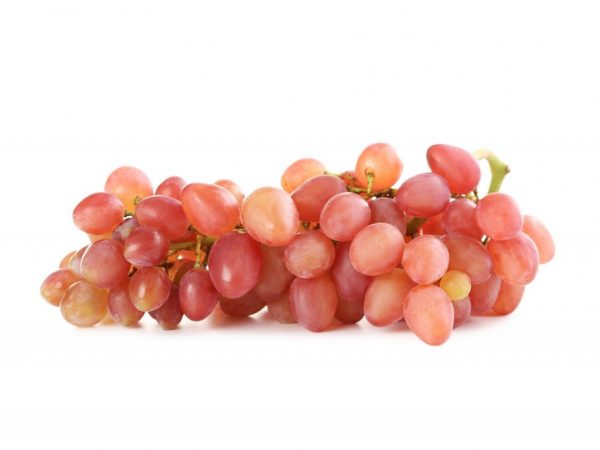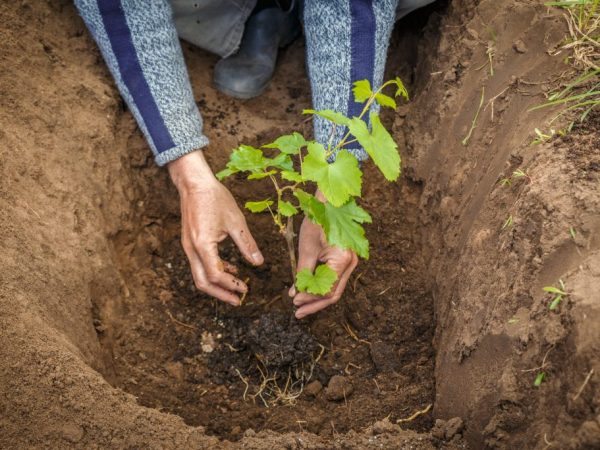Grape growing Descendant of Rizamata
The Grape Descendant of Rizamata received such a name for a reason: its description almost 100% repeats the characteristics of the parent. This grape culture contains all the positive qualities of its predecessor, which is why it is so popular among gardeners.

Grape growing Descendant of Rizamata
Description of the variety
The descendant of Rizamata belongs to the group of table grape crops. It is characterized by early ripening. The fruits are filled with color and taste by the end of July.
They are in no hurry to harvest. The bunches are left on the bushes to sweeten the fruit. The plant bears fruit for 3 years after planting.
Description of the bush
The grape variety Descendant of Rizamata is characterized by a tall bush, its height reaches 4 m.
Other features of the variety:
- the vine is powerful, and the bushes are spreading;
- the surface of the bark is green;
- leaf diameter - up to 7 cm;
- the outer part of the sheet plate, like the inner one, is matte and rough;
- the inflorescences are bisexual, due to which the bush pollinates itself.
Description of fruits
According to the description, the berries are large. The weight of each reaches 20 g. The peel is dense, pale pink.
The bunches are large, weighty, up to 2 kg, cone-shaped.
The grape variety Descendant of Rizamata is characterized by resistance to cracking and decay of fruits, therefore it is allowed to harvest with a delay of 1.5 months. The pulp of the fruit is tasty, dense, juicy.
Growing rules
The planting principle of the variety is the same as for most other grape crops. The Descendant of Rizamata celebrates the love of active sunlight, therefore, planting is carried out from the southern side of the garden at a distance of 2 m from the barriers. Nearby construction structures and fences protect young bushes from windy weather.
Planting is carried out in early April, in fertile soils. The best option is chernozem, loamy or sandy soils. Planting in heavy soils is allowed, but for this they are diluted with sand in a ratio of 2: 1.
Selecting a seedling and preparing a hole

The seat is prepared in advance
It is better to buy seedlings in gardening nurseries: there the planting material has already been grafted, which increases its resistance to diseases and parasites.
At the end of autumn, they begin to prepare the seat. To do this, they dig up the entire area, remove the roots of weeds from it and add 2 buckets of humus for each square meter. After that, they dig a hole 60x80 cm in size, in which a drainage system must be installed.
Landing
In the spring, 20 cm of the topsoil is poured into the hole and a seedling is planted in it. After the roots are distributed over the entire area of the pit, they are sprinkled with earth and watered with 15 liters of warm water. The plant is tall, so a metal support is driven in next to it, which is changed as the plant grows. The distance between the bushes should be 2 m, and between the rows - 3 m.
Care rules
Leaving involves the introduction of dressings.The procedure is carried out three times during the entire growing season:
- In the spring, the next year after planting, 20 liters of potassium nitrate solution (30 g per 7 liters of water) are poured under the root. This helps the bushes form buds and dissolve them faster.
- In the summer, a few weeks before the start of fruiting, 10 liters of superphosphate solution (20 g per 5 water) are poured under each bush. This is to enhance the flavor of the berries.
- In autumn, to protect the young plant from frost, the root system is mulched with humus and straw in a 1: 1 ratio.
Before watering, remove all weeds and loosen the soil so that water flows faster to the roots. The watering interval should be 2-3 weeks, depending on the climatic conditions of the region. Pour 20 liters of warm water under each bush. It is advisable to water in the morning so that the sun's rays do not evaporate moisture.
Pruning is carried out in the spring. In the process of work, all damaged areas of the bush are removed, the shoots are shortened: no more than 8 eyes should remain on each. This contributes to higher yields.
Pest and disease control
According to the description, birds are considered the most common pests of grapes. As a fight against them, a hedge made of a dense mesh is installed around the seedling. Special mesh covers that cling to each bunch help prevent harm from wasps.
To get rid of downy mildew and ordinary powdery mildew, regular spraying with a solution of ditan (20 g per 6 l of water) or ridomil (30 g per 5 l of water) helps. Treatment with topaz (10 g per 3 liters of water) or karbofos (50 g per 3 liters of water) helps to get rid of gray rot. When phylloxera appears, spraying is carried out using carbon disulfide (300 g per 10 l of water). The interval of frequency of treatments against diseases and pests should be 20 days.
Conclusion
The Descendant of Rizamata grape variety is especially popular, despite its low resistance to parasites and diseases. The reason for this is the high yield rates (20 kg per 1 bush).


